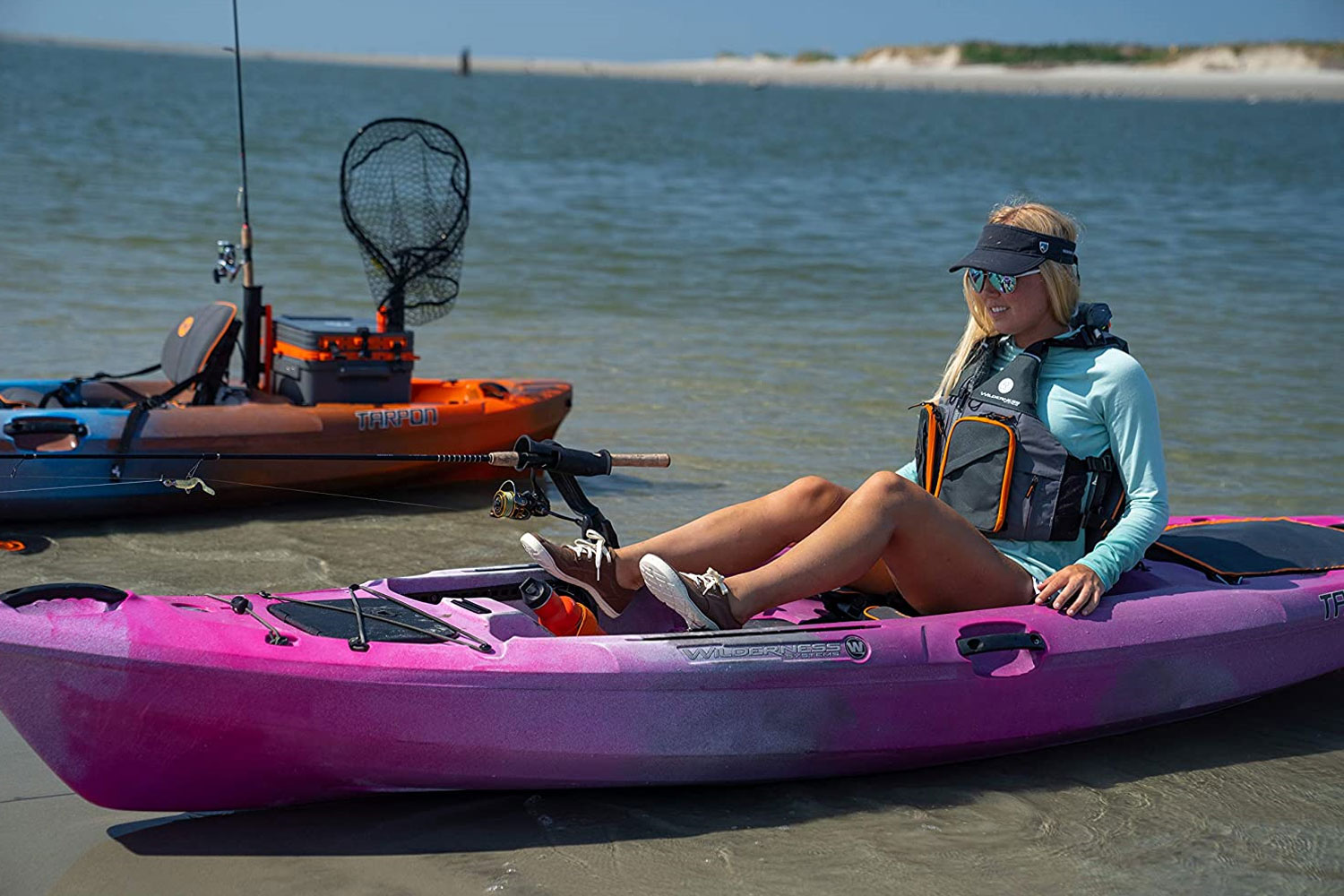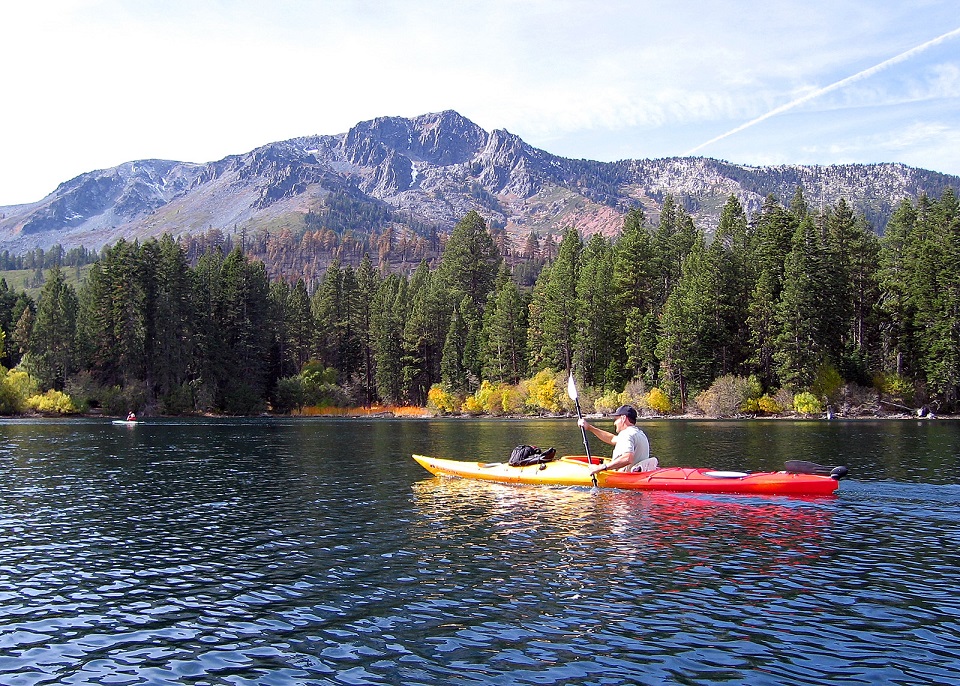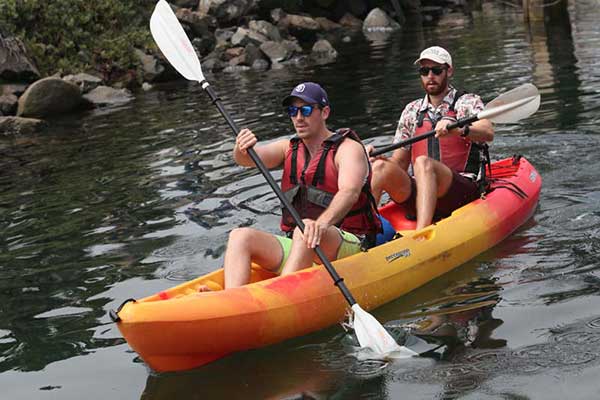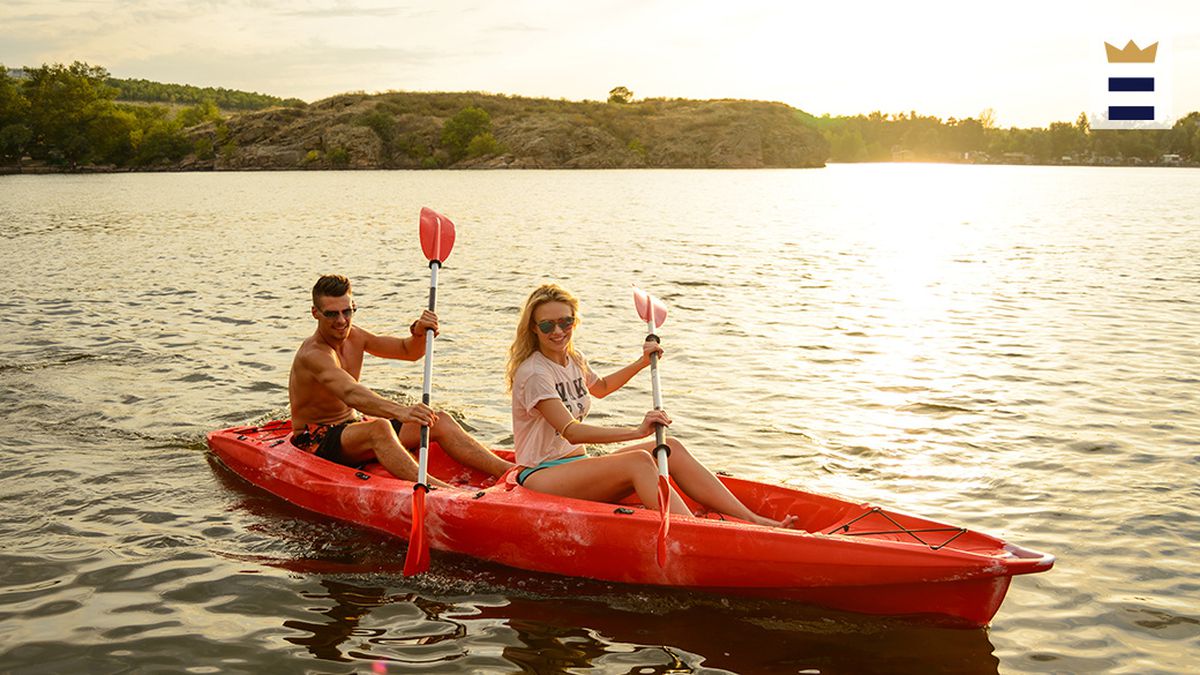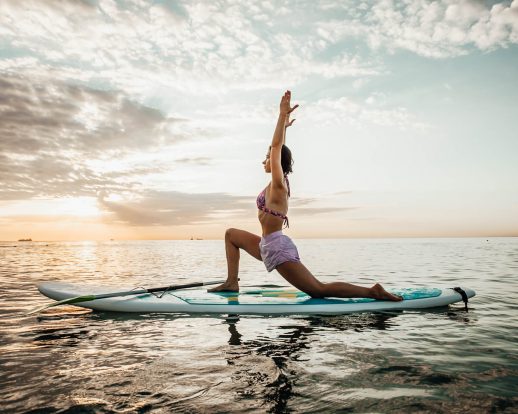
Get Started on the Water: Best Kayaks for Beginners 2026
In recent years, recreational Kayaking has become increasingly popular. Here are 2026's best beginner kayaks to help you get started.
For thousands of years, Kayaking has been a part of human history. Since Inuit people developed kayaking for fishing and transportation, it has become an increasingly popular form of recreation. Canoeing and Kayaking are active ways to enjoy the outdoors and the water.
Recreational Kayaking has grown in popularity due to its many benefits and widespread appeal. Kayaking combines physical exercise and the grace-filled feeling of being at one with water's stillness and flow.
As you dip and retract your paddle repeatedly on a clear and windless morning, the experience of slicing silently across the water's surface is breathtaking.
The kayak market can seem complicated to beginner paddlers who want to purchase a kayak and advance their skills. A reliable entry-level kayak is an essential piece of equipment for a beginner, and Kayaking requires a paddle and a personal flotation device.
Kayaks come in various styles and types, each designed to serve a specific purpose and suit a particular paddler. Kayaks fall into several categories: sit-ins, sit-on-tops, inflatables, tandems, and folding kayaks.
Since there are several categories, we've selected the best kayaks in each category to help you find your perfect kayak. You can learn more about your options by reading our buyer's guide and comparison chart. View our top-rated kayaks for beginners' picks below, or jump to a different category.
At the end of the list, we've included a how-to guide with answers to frequently asked questions.
In 2026, here are the best kayaks for beginners
Things we like:
- Seats that are comfortable
- Even while out on the water, it is easy to climb in and out of
- Smoothly makes turns, impressively maneuverable
- Suitable for a wide range of activities
- Features that are thoughtfully designed
Things we don't like:
- Slowly glides
- Compared to other options, more expensive
In the sit-on-top kayak category, we recommend the Wilderness Systems Tarpon 105. It is a versatile recreational kayak that can be used for various activities, such as fishing, camping, exploring, bird watching, and surfing.
Those interested in owning a single kayak that is both beginner-friendly and adaptable should consider the Wilderness Systems Tarpon 105. The Tarpon 105 is the newest version of the tried-and-true Tarpon. More features than ever are included in this updated Tarpon model, building on the success of previous iterations.
Wilderness Systems packed the Tarpon 105 with various features for on-the-water support - no matter your favorite kayaking activity. Kayaks like this are fun, stable, and sporty, regardless of whether they are used on flat water or flowing creeks and rivers.
A fishing pole holder, GPS unit, and fishfinder screen can be fitted to the Tarpon 105 for fishing purposes. With its highly durable design and ability to maneuver easily through tight coves and sharp bends, the Tarpon 105 is one of the best boats in its class.
The Tarpon 105 is shorter and stubbier than many others as a sit-on-top kayak. Because of its shape, this boat is not particularly fast or gliding through the water.
Unlike race boats, the Tarpon 105 is designed for cruising comfortably rather than racing fast. Check out the Tarpon 120 if you're looking for a similar option that's also longer and faster.
Due to its flat hull, the 105 is easy to turn. The boat changes direction smoothly and with minimal effort while paddling.
Wilderness Systems Phase 3 AirPro seating system makes the Tarpon 105 exceptionally comfortable for long kayaking sessions. An ergonomic and supportive backrest is essential for a long day on the water.
In addition to a sizeable waterproof storage well, a magnetic water bottle strap, a built-in paddle holder, rigid carry handles, and even a dog-friendly deck, the Tarpon 105 offers many well-considered features.
For paddlers who prefer stability over speed, the Tarpon 105 is a great choice. The Tarpon's shorter length and 55-pound weight make it easily portable.
With its feature-packed and durable design, the Tarpon 105 provides good value for money, despite its higher price tag of $1,079. For the best sit-on-top kayak, we recommend the Tarpon 105. It's versatile and comfortable without sacrificing fun.
Best Sit-In Kayak For Beginners
Things we like:
- Lightweight and durable
- Paddle included
- A good balance between graceful tracking and responsive maneuverability
- Easily cuts through choppy water with a high-volume bow
- Seats and cockpits that are comfortable
- Value for money
Things we don't like:
- It is not suitable for open ocean or whitewater
- Inconvenient for fishing
The Old Town Manitou Sport sit-in kayak is an excellent choice for beginners and seasoned paddlers. The Manitou Sport is a popular craft among Old Town customers with its simple design and maneuverability.
Manitou Sport, except for technical whitewater, can be used in most water bodies, including lakes, rivers, creeks, and bays. With a hull diameter of 26.5 inches, this kayak is extremely stable. Smooth tracking and nimble maneuverability are provided by its 10'11" length.
It can handle speed on open water when the Manitou Sport is in use. Moreover, its extended keel makes it easy to turn sharply in tight spaces, and Kayaks that excel in so many areas are hard to find.
The boat's storage space isn't quite adequate for overnight trips, but it is plenty for day trips. Deck rigging on the bow and stern provides reliable waterproofing, and a dry storage area lets you secure equipment.
A comfortable seating system and adjustable foot pedals make it easy to sit in the boat for hours without becoming stiff.
It is easy to fall in love with the Old Town Manitou Sport. Kayaks with large cockpits are easy to climb into and out of, and toggle handles make it easy to transport the kayak from the car to the water.
It comes with a Carlisle Magic Mystic paddle, making it an excellent value at $800. Old Town built this boat to maximize recreational fun on the water.
Best Budget Kayak For Beginners
Things we like:
- Affordability
- Duffel bag included for easy packing
- Pump and paddle included
- A good tracker and steerer
- Adjustable and removable seat
Things we don't like:
- Drain plug not present
- Durability is not the best
- Slowly inflates with included pump
Our pick for the best budget kayak in 2026 is the Intex Challenger K1 inflatable kayak. It is far cheaper than other options, with a normal price tag. Considering the price, it's a great deal that can provide many hours of fun on the water.
The Challenger K1 kayak handles impressively well for a cheap kayak. Overall, the boat rides low, which makes it relatively stable and less vulnerable to wind pushes.
The K1 tracks decently well in a straight line thanks to its long skeg. Its short, stubby profile makes it easy to turn and steer.
The low profile of the craft makes it susceptible to taking on water. Since the K1 has no scupper hole, you'll have to paddle to shore and flip it upside down to drain any excess water.
The inflatable seat has decent comfort, and we appreciate that it is removable and adjustable. There is a cargo net on the upper deck of the boat that provides some storage for gear. Camping gear cannot be carried, but a water bottle, a small tackle box, and some snacks can easily fit in the net.
A venture-resistant vinyl is claimed to be used to manufacture the Intex K1. In using and storing the boat, users should keep it away from sharp objects.
Two separate air chambers inflate quickly. Because there are only two chambers in this kayak, you should wear a personal flotation device. The remaining chamber won't provide much buoyancy if one of the chambers pops.
A carrying duffle, an inflation pump, a repair patch, and an 84-inch aluminum oar come with the K1. Set up the boat by inflating both chambers until the gauge indicates it is ready.
You can fold back the boat into its carrying duffel after your paddling session is over by drying it with a towel. The ship and its components can easily be stored in a closet or garage once packed down.
The Intex K1 challenger is a good choice for paddlers looking for a fun and affordable vessel. This is not the kayak for advanced paddlers with race or expeditionary goals. The K1 makes a beautiful addition to your summer kit for a day of summer fun.
Best Tandem Kayak For Beginners
Things we like:
- Durable
- Capacity of 550 lbs.
- Can be used as a single boat or a tandem
- Tracks well
- Handles speed with ease
- Ample storage space
Things we don't like:
- Heavy
- More expensive than other options
- Setup is difficult, especially with just one person
A high-performance inflatable kayak, the Advanced Elements Convertible Tandem Kayak, can be paddled by two people or one. The Advanced Elements is comfortable, durable, and packed with practical features despite being expensive for an inflatable kayak.
Depending on how you arrange the seats, you can use this kayak either as a tandem or as a single kayak. Two paddlers plus additional gear can fit comfortably in its 550-pound capacity. Many pieces of equipment can be tied down, secured with bungees, and stored in integrated pockets. Kayaks like this can be configured for single paddlers for overnight expeditions.
It is easy to forget that you are paddling an inflatable boat when paddling the Advanced Elements Convertible Tandem. A rigid-sided kayak handles more like this boat. With three outer layers of ripstop material, it offers supreme durability.
With a length of 15 feet and a hull width of 32 inches, this boat tracks well without sacrificing stability. A small skeg and multiple tracking fins make the board smooth, straight, and fast.
Its tandem mode provides ample space for both paddlers to move freely without getting in each other's way. A high seatback offers sufficient support and remains comfortable throughout a full day on the water.
During paddling, your center of gravity is close to the water due to the low-lying seats. The boat feels less tippy with this configuration since wind resistance is reduced.
It takes some practice to inflate and set up the AE Convertible tandem, and you will still need to practice setting it up a few times before feeling comfortable. Pumping six air chambers is possible, but only three are essential for structural integrity. It is necessary to maintain a specific pressure in each room. Don't over- or under-inflate when inflating because it is easy to make a mistake. There is no paddle or pump included with the kayak.
There are many ways in which this inflatable tandem feels more like a solid plastic boat than an inflatable one. Some users find its bulkiness a disadvantage - it's hard to pack into its duffel and carry alone.
Although this kayak does not offer the same tracking or speed as other inflatable tandems, it stands out in performance. We picked this tandem kayak because it is built to last, even though it is not cheap.
Best Pedal Kayak For Beginners
Things we like:
- Very comfortable seat
- Waterproof gear storage with hatch
- Rod mounts and accessories to personalize your kayak
- Kick-up/retractable fins
- Good price
- High-tech rotomolded construction
Things we don't like:
- Lots of individual components
- Heavier than most other kayaks on this list
Over 20 years ago, Hobie began making kayaks. One of its newer models was released in 2026. With a new rotomolded hull construction, this kayak maintains the tried-and-true design we loved in the previous model.
There are many advantages to pedal kayaks, and there are usually more accessory features and more storage space on these models. The paddles are hands-free, of course, and this technology has many great applications, from fishing to birdwatching to photography.
In the water, the Hobie Mirage Passport 10.5 R provides excellent tracking, regardless of whether the weight on board is 150 or 200 pounds. Fins, pedals, and rudders comprise the Mirage Glide technology.
This kayak has a stable rudder and steering control next to the seat. It measures 34 inches across but is more comprehensive than standard kayaks to accommodate the seat and steering control.
The aluminum frame seat may have caught your attention. Compared to standard kayak seats, it's way more comfortable. Adding weight is a con. Paddling overnight, or even day touring for long periods, requires a comfortable chair. It feels streamlined moving through the water, even with the extra weight of the kayak.
Activating the kick-up fins automatically retracts the Passport 10.5 R. Doesn't that sound cool? Kick-up fins automatically retract upon impact to protect you and your equipment, whether you're paddling in shallow water or encountering logs or obstacles.
There are two cargo storage areas with bungee straps on the bow and stern of this kayak and an 8-inch twist-and-seal hatch for storing gear. The storage of this kayak is essential if you plan to use it for fishing or touring.
Rods, tackle kits, dry bags, a small cooler, camera equipment, or anything else can be stored on this boat.
The price of pedal/fishing kayaks can reach $5,000. Especially if you're looking to pedal, you'll love this Hobie cat kayak. A two-piece aluminum paddle is included with this kayak.
Frequently Asked Questions
What type of kayak is best for a beginner?
For beginners, it is generally recommended to choose a recreational kayak, also known as a sit-on-top kayak. These kayaks are wider and more stable, making them easier to balance and maneuver. They are also more comfortable for longer periods of time and have a larger open cockpit which allows for easy entry and exit. Recreational kayaks are usually shorter and lighter than other types of kayaks, which makes them more manageable for beginners.
What is the easiest kayak to get in and out of?
As mentioned above, recreational kayaks are generally the easiest to get in and out of due to their wider and more open cockpit design. Specifically, sit-on-top kayaks are the easiest to enter and exit since you don't have to climb inside a cockpit. You simply sit on top of the kayak and slide your legs inside.
Can 60 year olds kayak?
Yes, absolutely! Age is not a limiting factor for kayaking as long as the individual is in good health and has no physical limitations that would prevent them from paddling. Kayaking is a low-impact activity that can be enjoyed by people of all ages, and it can be a great way for seniors to stay active and enjoy the outdoors.
How do seniors get out of a kayak?
Seniors can get out of a kayak by following these steps:
- Paddle the kayak to a shallow area with a firm and stable surface to step out onto.
- Position the kayak parallel to the shore and perpendicular to the waves or current.
- Place the paddle across the kayak's cockpit or across the back of the kayak.
- Swing both legs over the side of the kayak and plant your feet on the bottom.
- Use your hands to push up and stand up slowly.
What is the 120 rule for kayaking?
The 120 rule is a safety guideline for kayakers that states that the combined air and water temperature should be at least 120 degrees Fahrenheit. This means that if the water temperature is 60 degrees Fahrenheit, then the air temperature should be at least 60 degrees Fahrenheit as well. The reason for this rule is to prevent hypothermia, which can occur when the body loses heat faster than it can produce it.
What should you not do while kayaking?
While kayaking, you should avoid the following:
- Paddling in areas with strong currents or rough waves that are beyond your skill level.
- Not wearing a life jacket.
- Overloading the kayak with too much weight or gear.
- Drinking alcohol or taking drugs that impair your judgment and coordination.
- Ignoring weather conditions and not checking the forecast before paddling.
- Separating from your group or not telling anyone where you are going.
- Tossing trash or litter in the water.

